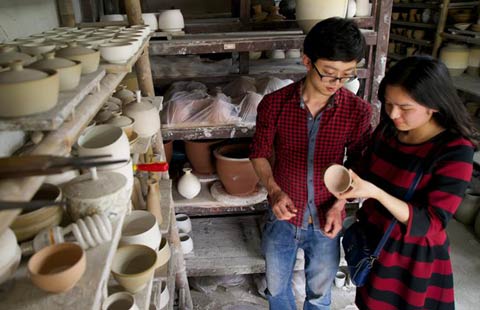China's RRR cut positive for real economy
(Xinhua) Updated: 2015-04-21 09:30BEIJING - The Chinese central bank's decision to cut banks' reserve requirement ratio (RRR) will be good for growth, reduce financing costs, and aid the real economy, analysts believe.
The RRR will be cut by 100 basis points (bps) from Monday, the second across-the-board cut this year and the biggest reduction since November 2008.
Economic data in the first quarter has been poor, with growth slowing to 7 percent, the lowest rate since 2009. Tighter margin trading rules were announced on Friday.
The Shanghai stock market responded by briefly trading higher, closing 1.03 percent up at 4,331.28 at midday Monday, before falling in the afternoon.
For what purpose?
Lian Ping, chief economist of the Bank of Communications, believes the cut will improve lending and stabilize growth.
Last week's industrial output, investment and consumption data all indicated subdued momentum in the first quarter. Exports and imports slumped by 14.6 percent and 12.3 percent in March.
"It is necessary to fine-tune monetary policy to ensure credit growth and lower financing costs," said Ma Jun, chief economist with the research bureau of the People's Bank of China (PBOC).
The RRR for big banks is now 18.5 percent. Lian estimates the cut will release around 1.2 trillion yuan ($196 billion) into the economy and significantly improve liquidity. Other economists at UBS and China Minsheng Bank predict similar scenarios.
Ma said the RRR cut will lower financing costs as banks with capital to lend cut rates. Better liquidity will reduce the costs of financing through corporate bonds.
No major stimulus
UBS economist Wang Tao said the RRR would be seen by the market as significant easing.
"The RRR cut will increase liquidity, largely to offset the drop in FX-related liquidity supply and buttress base money growth. In other words, easing, yes; simulative, not necessarily," Wang said in a research note.
According to the PBOC, FX assets on its balance sheet contracted by 252 billion yuan in Q1. In the same period last year they increased by 788 billion yuan. Private investment stood at 4.61 trillion yuan in Q1, down 895 billion yuan year on year.
"With yuan funds from foreign exchange decreasing and increasing pressure of FX outflow, the RRR cut comes at the right time," Lian said.
Guan Qingyou of Minsheng Securities said the RRR cut will help financial institutions defend themselves against credit risk as outdated production capacity is eliminated nationwide.
- China's Q1 bond issuance hits 3t yuan
- China's Q1 tax revenue up 3.4%
- Guangdong banking on finance
- Steel firm gets full control of African mine
- Reserve ratio cut to boost lending to developers
- Baidu: Sayonara to search in Japan
- Lender finds fertile fields in overseas markets
- Property register to come under one roof

















